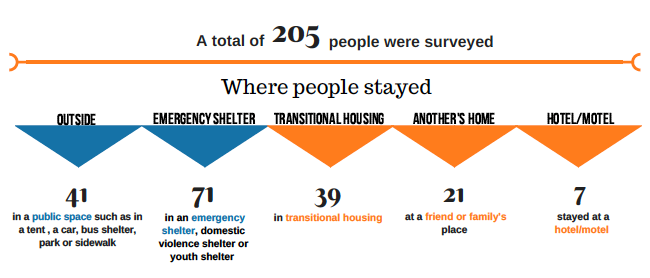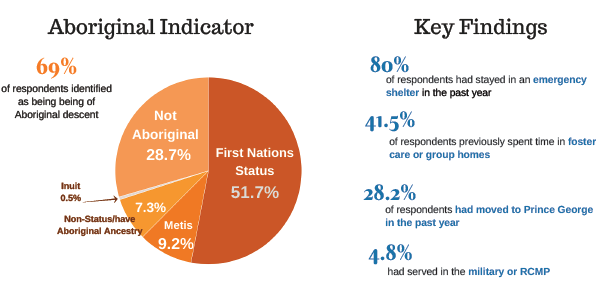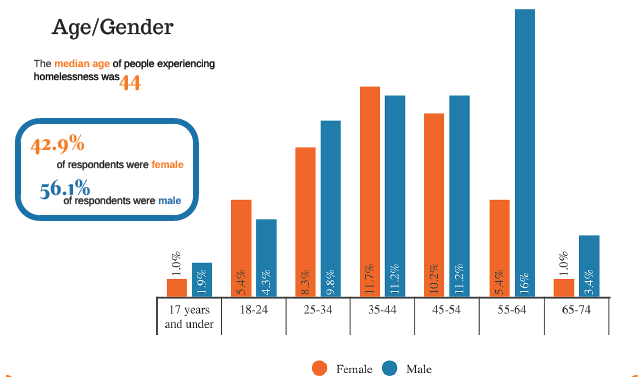More than half of Prince George's homeless population have been living with that reality for at least six months.
Of the 205 people interviewed over a 24-hour period in April for Point-in-Time count, 131 are defined as chronically homeless. A further 85 are considered episodically homeless because they had been homeless three or more times in the last year. In total 118, or 58 per cent, were considered "absolutely homeless" and living unsheltered or emergency sheltered.

The vast majority interviewed - 90 per cent - said they would like to find permanent housing.
"I would like to dispel the myth that people are homeless because they want to be," said count coordinator Kerry Pateman. "I don't think that's true at all."
Finding support for those people who want to change their circumstances is critical, she said.
"There is a significant population that if we could get supports to help them get housing - such as Housing First project or something like that - finding people appropriate housing or supports... we could make a dent in our homeless population."

While Pateman said the count only provided a snapshot of homelessness on one day in the city, the data is still important.
Almost one third had moved to Prince George in the past year. It wasn't a surprising statistic - 28 per cent - but it was the first time they'd asked the question.
"We'd heard things like that but we didn't actually know," said Pateman, who also works with the Community Partners Addressing Homelessness.

A disproportionate number identified as Aboriginal, representing 69 per cent of the homeless people in Prince George. That's six times the percentage that appears in the local population, according to 2006 Statistics Canada data, which placed Prince George's aboriginal population at 11 per cent.
The reason most people became homeless in the first place was due to problems in the home, such as a family breakdown, and family conflict or violence. Pateman found that data surprising, since addiction issues are often considered a root cause. In Prince George, substance abuse was the most common reason for those who recently found themselves on the streets.
About 41 per cent had previously been in foster care or group homes and 21 per cent said they were 17 or younger when they first became homeless. The average age of Prince George's homeless population was 30.
The data was collected over a 24-hour period by staff at 12 local agencies - shelters, transitional housing facilities and drop-in centres - and 30 volunteers who canvassed unsheltered spots like sidewalks, parks and public spaces.
Prince George joined 30 communities across Canada to participate in the first national count, but it was the city's third count.




